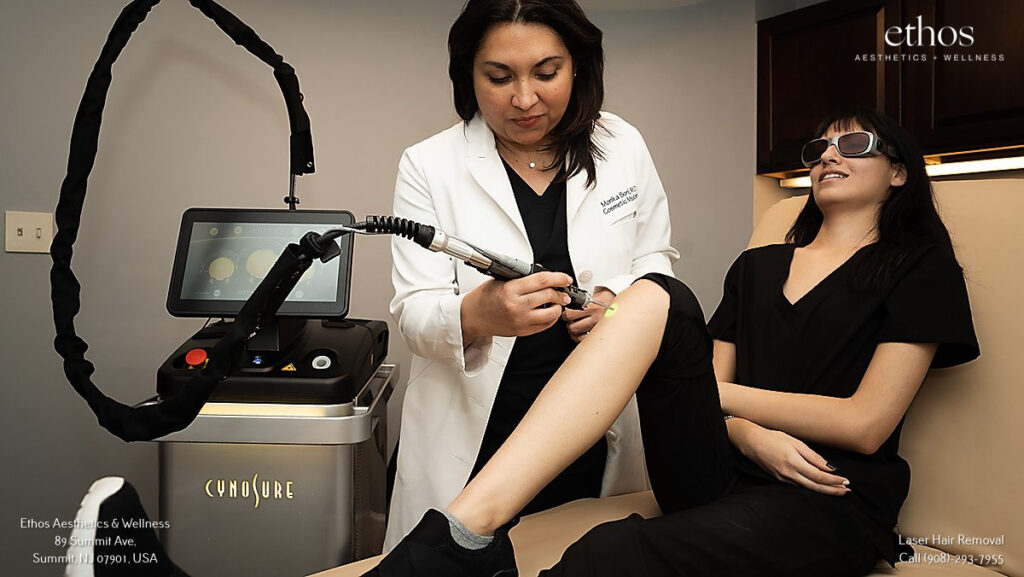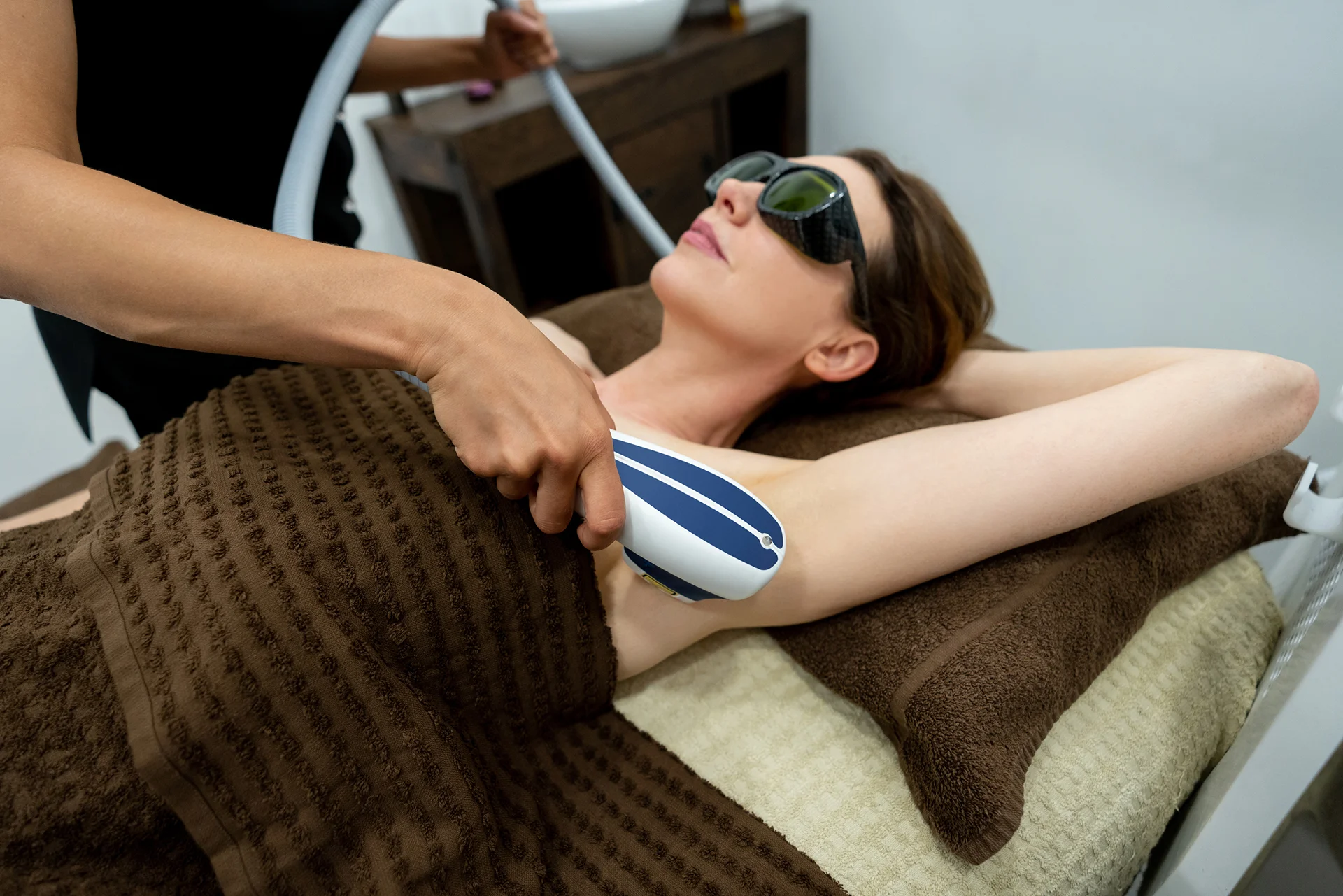Just how long can laser hair removal’s results really last? While some regrowth is inevitable, recent studies show many enjoy hair-free skin for years after treatment when certain factors are optimized.
Discover the surprising length of time laser can diminish unwanted hair growth through exploration of its targeted effects on follicles. Learn why even a few maintenance sessions make a big difference in a laser’s longevity and how adjusting certain lifestyle aspects lends itself to hair relief that stands the test of time.
Understanding Laser Hair Removal

Laser hair removal works by using a beam of light, laser energy, and hair follicles to achieve permanent hair reduction. As the laser emits the beam (or intense pulsed light (IPL), this gets absorbed by the pigment (melanin) in the hair follicles. This light energy is converted into heat.
The generated heat causes damage and destroys hair follicles, preventing future hair growth. The selective targeting design of hair removal devices minimizes injury to the surrounding skin while targeting hair follicles through the IPL technology’s ability to differentiate between hair follicle pigments and the surrounding skin.
As the hair follicles are destroyed, they will not grow back, resulting in long-term or permanent hair reduction. Simply put, the process contains 4 major steps which are:
- Light absorption
- Heat damage
- Selective targeting
- Permanent hair reduction
Laser Hair Removal vs Other Hair Removal Methods
Laser hair removal offers noteworthy improvements over other traditional depilation alternatives like shaving, waxing, and threading in terms of:
| Aspect | Laser Hair Removal | Traditional Methods |
| Long-term results | Provides long-term or permanent hair reduction | Offers only temporary results |
| Precision | Targets specific areas with precision | May not be as precise, leading to uneven or missed hair removal |
| Speed | Treats multiple hair follicles simultaneously | Can be time-consuming, especially for larger treatment areas |
| Discomfort | Generally less painful than waxing or threading | Can be more painful, especially with methods like waxing or sugaring |
| Convenience | At-home devices offer convenience for home treatments | Requires salon visits or performing the procedure on your own |
| Cost | The initial cost may be higher, but long-term savings are possible | Costs can add up over time with repeated salon visits or buying supplies |
| Hair regrowth | Can result in permanent reduction or minimal regrowth | Hair regrowth is expected and may require frequent maintenance |
| Skin sensitivity | Suitable for various skin types and colors | May not be suitable for sensitive skin or certain hair types |
| Ingrown hair prevention | Can help prevent ingrown hairs | May not effectively prevent ingrown hairs |
The Role of Skin Color and Hair Colors in Laser Hair Removal
The effectiveness of laser hair removal can be influenced by the individual’s skin color and hair color.
1. Dark hair, light skin
Laser hair removal works by targeting the pigment in the hair follicles. Dark hairs have more pigment, making them easier to target and treat effectively. Light skin allows for better differentiation between the hair follicles and the surrounding skin, reducing the risk of skin damage during treatment.
2. Darker skin tones
People with darker skin tones may require specialized laser hair removal devices that can safely and effectively target the hair follicles without causing damage to the surrounding skin.
3. Lighter hairs
Laser hair removal may be less effective on lighter hairs, as they have less pigment for the laser to target. Specialized devices or settings may be needed to treat lighter hairs effectively.
The Science Behind Laser Hair Removal
The hair growth cycle plays an important role in the effectiveness of laser hair removal. Lasers target the pigment in the hair follicles to damage the follicle and prevent regrowth. However, this is only possible during the active growth phase, called anagen.
During the anagen phase, the hair is still attached to the hair bulb containing melanin that lasers can target. The length of anagen varies by body area but typically lasts 2-7 years. As each hair grows independently, multiple treatments are needed to target all hairs during anagen.
The catagen transition phase lasts weeks as the follicle shrinks and detaches.
Telogen is the resting phase, where the dormant hair may remain for unpredictable days to years before potentially regrowing. Laser treatment is ineffective during this stage since the hair is disconnected from the follicle.
Given the variability in hair growth cycles between individuals and among different hair follicles on a person’s body, a single laser treatment rarely provides permanent hair removal.
Follow-up treatments are usually necessary to gradually reduce hair regrowth over time as the laser targets hairs entering anagen during subsequent cycles. Maintenance visits may also be required long-term for most patients. The unpredictable nature of the hair cycle challenges achieving full and permanent results with laser hair removal in one treatment.
Factors Affecting Laser Hair Removal Results
Laser hair removal results can vary depending on several important factors related to individual skin and hair characteristics as well as a treatment protocol. These are:
| Factor | Why? |
| Skin type and skin tone | Individuals with light skin tones are more responsive to laser hair removal. Darker skin tones may require specialized devices or settings to avoid skin damage. Tanned skin can affect results as the laser may target melanin in the skin instead of follicles. |
| Hair type and thickness | Laser hair removal may be less effective on hair with less pigment, such as grey or blonde hair. Coarse hairs may require more treatments for optimal results. |
| Hormonal levels | Fluctuations in androgen and estrogen levels can trigger hair growth, making long-term reduction more challenging to achieve. |
| Hair growth cycle | Laser hair removal is most effective during the anagen phase when hair is actively growing and attached to the hair bulb. Multiple treatments are required to target individual hairs at different growth rates. |
| Aftercare commitment | Proper aftercare, such as avoiding sun exposure and certain products for a period of time, is essential to avoid skin irritation and achieve optimal results. |
The Laser Hair Removal Procedure
Laser hair removal is a comfortable and effective process when performed correctly. This section outlines what to expect before, during, and after a laser hair removal treatment.
Preparing for a Session
It’s important to review your medical history and medications with your provider before treatment. You may be advised to avoid sun exposure and tanning for a period prior. Waxing or plucking the area should be avoided 4-6 weeks beforehand. Shaving is acceptable as it cuts hairs but leaves follicles intact. Some choose numbing cream to reduce discomfort during treatment.
What to Expect During a Session
Protective eyewear will be worn while the doctor or technician uses a handheld laser on the follicles. Pulses feel like a rubber band snaps against the skin. Some devices incorporate chilled tips, air flow, or cryogen to minimize pain. A topical anesthetic may also be applied.
How long does a session take?
Treatment time depends on the size of the area but sessions usually last 15-30 minutes for smaller areas and 30-60 minutes for larger areas like the back or legs. Some modern devices allow rapid treatment of large zones for optimized patient experience.
How many sessions are needed?
Most people need 6-8 treatments on average, spaced 4-6 weeks apart. The number may vary depending on skin and hair type as well as the area. Facial hair tends to require fewer (3-6) sessions while body areas like the back often need more (8-10) treatments.
Aftercare Instructions
Avoid sun, hot showers, and certain products like glycolic acid following treatment to prevent irritation. Apply a cold compress or aloe to reduce redness or swelling. Proper aftercare is essential for optimal long-term results.
Most people begin seeing visible hair reduction after 3-4 sessions. Maximum long-term results are typically achieved after the full recommended course of 6-8 treatments spaced 4-6 weeks apart over several months.
Potential Side Effects and Safety
While laser hair removal is generally a safe procedure, it’s important to understand potential risks. The most common minor side effects include temporary skin redness, swelling, or irritation around the treatment area. These mild reactions are typically clear within hours without issue.
In rare cases, the skin may develop a darker or lighter pigmentation after treatment. The risk of pigment changes can be reduced by avoiding sun exposure before and after sessions. Special care should also be taken with darker skin tones.
Some individuals may experience mild follicular swelling at the treatment site. This swelling tends to be minor and resolves spontaneously without treatment. On very rare occasions, blistering, crusting, or changes in skin texture have been reported.
To minimize risks, it’s crucial to select a qualified provider with expertise in the specific device being used. Improper use of laser settings can potentially lead to scalding or burns if the practitioner lacks adequate training. While very uncommon, permanent scarring is another potential risk if treatments are not administered correctly.
How Long Does Laser Hair Removal Last?
The longevity of laser hair removal results varies from patient to patient and depends on several factors and the number of treatments received.
- Most patients can have laser hair removal once every 4 to 6 weeks.
- To remove the hair, most patients need 2 to 6 laser treatments.
- After finishing the treatments, most patients do not see any hair on the treated skin for several months or even years.
- When the hair regrows, there tends to be less of it. The hairs also tend to be finer and lighter in color.
- For some people, laser hair removal on the body provides permanent or near-permanent results.
- While permanent results aren’t usually achieved on the face, regrowth may not occur for years.
- Most people experience hair removal that lasts several months, and it might last for years. But laser hair removal doesn’t guarantee permanent hair removal.
- The biggest factor in determining the longevity of your results is how many treatments you receive.
- The length of each laser hair removal session depends on the area being treated. For example, it takes 1 minute to treat the upper lip, 5 to 7 minutes to do both underarms, and 25 to 30 minutes to do full legs.
- Patients should wait about four to six weeks between each treatment.
Laser hair removal can provide long-lasting hair reduction, with some individuals experiencing up to 90-95% reduction in hair growth. However, multiple treatments are required to achieve optimal results, and touch-up maintenance treatments may also be required for most patients in the long term
Get Expert Guidance from Ethos Spa!

By now you understand that laser hair removal is a highly individual process, with results varying depending on your unique skin and hair characteristics. To truly understand your personalized treatment needs and expectations, the best approach is to consult directly with the experts.
The highly skilled practitioners at Ethos Spa can conduct a thorough evaluation and recommendation session. We will examine your skin, analyze your hair type, and determine the ideal laser and protocol designed specifically for you. We will provide accurate guidance on topics like:
- The number of sessions required to achieve your desired results
- Appropriate timing between treatments
- The long-term hair reduction you can expect
- Potential side effects based on your individual profile
- Total cost estimates tailored to your treatment plan
Rather than guess how long laser hair removal might last for you, meet with Ethos Spa’s experts. Through an in-person consultation, we can develop a custom treatment strategy to ensure you achieve maximum effectiveness and satisfaction. Book an appointment with us today to get started!







